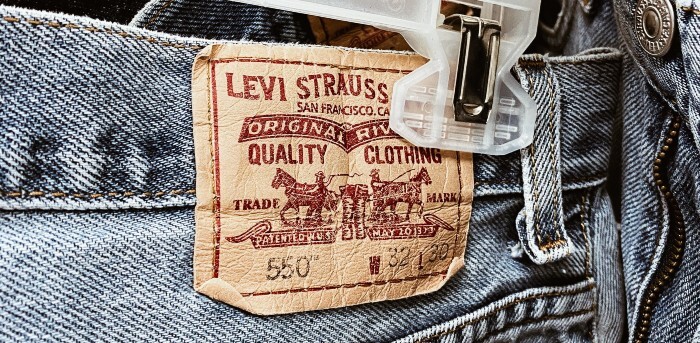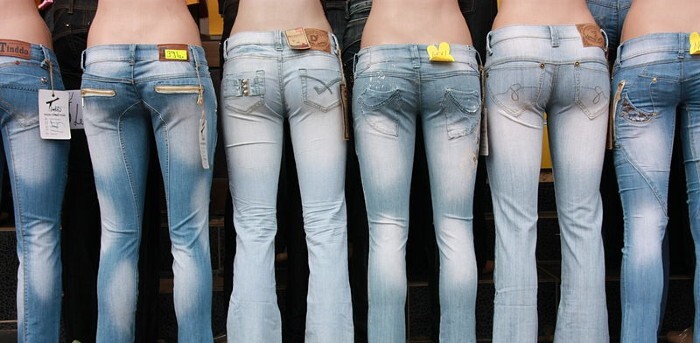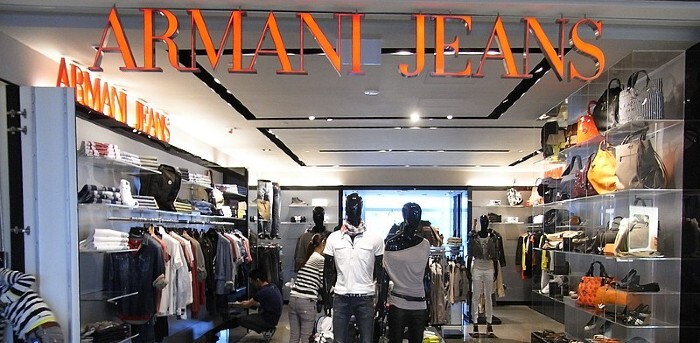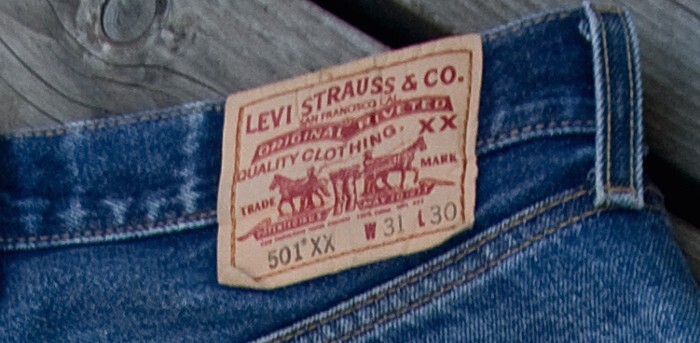From Miners to Hipsters: A Complete History of Jeans

When you think of jeans, you probably think of cowboys, carpenters, and dudes whose balls have been cut off from the rest of their circulatory system since 2007, but they represent so much more than that. The story of jeans is really the story of America: the powerful stealing from the less fortunate.
It Means “From Genoa”

The word “jeans” likely derives from their origins in Genoa, Italy in the 17th century, when the French called them bleu de Gênes, which literally means “blue of Genoa.” Yes, it’s really that stupid.
They Were For Sailors

Jeans were initially created for Italian sailors, who needed pants that could be rolled up easily and worn wet or dry. They also needed to look slick, being Italian and all.
More Like Jeans-Gabriel Eynard
From there, they entered France and Switzerland on the back (if not the butt) of Swiss businessman Jean-Gabriel Eynard. He owned the garment factory that supplied the French military with their uniforms, which he made from the sturdy denim fabric he’d discovered in Genoa. Sure, they looked like hippies, but that wasn’t a thing yet, so it was fine.
Levi Strauss and the Birth of American Jeans

News of the trend next made its way to the ears of German businessman Levi Strauss, who patented the riveted, pocketed jeans we know today after moving himself and his business to America in the late 1800s and learning that the local miners were literally working their pants off. He initially called them “waist overalls,” which just sounds like he forgot the word for “pants.”
A Distinctly West Coast Phenomenon

Because it’s an entire country closer to Europe, most European fashions make their American debut in New York and slowly spread west -- there’s no Silicon Valley Fashion Week, after all. Jeans were a unique case because Strauss’s store, and the workers he made them for, were in San Francisco, and the fashion has been inextricable from Western culture, from cowboys to surfers, ever since. So suck it, New York.
Womens Jeans
It took another 50 years for Levi Strauss & Co. to consider making women’s jeans, and they were very different from the ones worn by (who they clearly considered to be) real people. One key difference that has thankfully since been corrected is that women’s jeans zipped up from the side, because women apparently don’t need to pee quickly or be comfortable.
Intentional Distressing

In 1935, the year after the debut of women’s jeans, Vogue ran a delightfully classist feature on ranch fashion that suggested “an intentional rip here and there.” That means intentionally distressed jeans go back much further than when we started seeing it at Forever 21 in the 2000s, so quit yelling at that cloud, old man.
Soldiers As Fashionistas
Jeans didn’t really become popular among people who didn’t tend to get them dirty until World War II, when American soldiers wore them in the course of duty and then sometimes just didn’t take them off. This was the height of American patriotism, so soldiers were basically movie stars and everyone wanted to dress like them, weird stolen valor vibes notwithstanding.
Actual Movie Stars

(Warner Bros.)
By the ‘50s, jeans were the uniform of the youth counterculture, which included a lot of ex-soldiers and their children. This was reflected in movies like Rebel Without a Cause, where they were worn by a bisexual ballet dancer who nevertheless popularized them even further as the pants of choice for the dangerous. As a result, jeans were actually banned from many businesses, for fear that someone’s pants might stick up the joint with a switchblade or something.
Cold War Jeans Smuggling
By the ‘60s and ‘70s, upper-crust intellectuals favored jeans in a somewhat misguided attempt at solidarity with the working man, but the real commies were decidedly not fans. The Soviets saw jeans as a symbol of Western decadence, and you couldn’t get them without illegally trading with your enemies, but that didn’t stop dedicated fashionmongers from smuggling them in, meaning that Orange is the New Black flashback of a young Red excited by illicit jeans was based in reality.
Get In Here, Canada

In the ‘50s, Donald Freeland of the Canadian Great Western Garment Company invented stonewashing as an environmentally friendly and much cheaper method of treating denim. That means he’s responsible for the proliferation of stonewashed denim in the ‘80s and in no small part for the stereotype of the “Canadian tuxedo,” so, you know. Get him!
Designer Jeans

The ‘80s were also the time when jeans made their full leap from practical workwear to a style coveted by the elite with the introduction of designer jeans, most famously by Gloria Vanderbilt, who was a Vanderbilt, for Christ’s sake. Her jeans cost about $160 in today’s money, a little more than twice the price of a good ol’ pair of Levis, which is mostly surprising in that, holy cow, Levis had gotten expensive, too.
Long Live Skinny Jeans

Skinny jeans have been decried as one of the four horsemen of the hipster fashion apocalypse (the others are fake glasses, patchy facial hair, and ugly hats), but they actually became popular much earlier than the 2000s, worn by rock stars in the ‘50s, movie stars in the ‘60s, and punks in the ‘80s. They’re also universally flattering, so like, let us have this.
Jeggings Haven’t Always Been So Reviled
Possibly the only more derided iteration of jeans is jeggings, which were actually a hot ticket item when they were introduced in 2009, popularized by celebrities like Beyonce and Paris Hilton, who was also still a hot ticket item at the time. Sure, they may be Walmart-wear now, but they’re soooo comfy, you guys.
They’re the Best-Selling Clothes Ever

You might think it would be tighty-whities or T-shirts, but no, the “best-selling garment in human history” is the original Levi’s 501s. It’s not really fair because their design has been altered significantly over the decades, but fashion must adapt with the times (and butts).
Top image: Jamar Crable/Unsplash